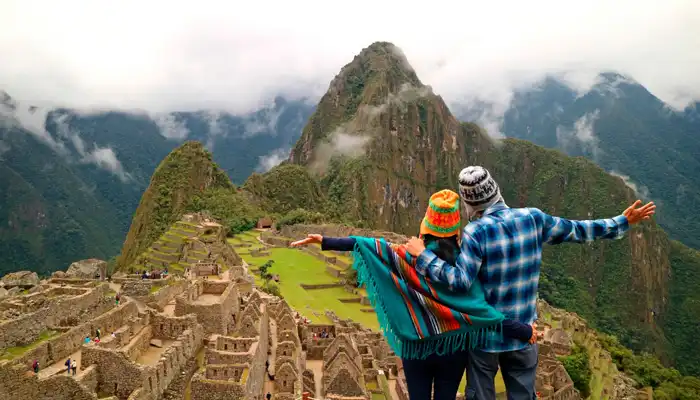
Many people are mistaken in thinking that the travel experience in Peru is limited to Cusco and Machu Picchu. Those who believe that there were no organised societies in this land before the Incas are making a huge error. The same goes for those who think that this nation, with its diverse geography, is just about mountains.
The truth—the absolute truth—is that our country has so much to offer, from beaches that caress the desert to forests that are the lungs of the world, from cities that were established thousands of years before the Incas to urban spaces with modern, cosmopolitan vibes.
Peru truly has it all, and then some. If you have any doubts, read this guide carefully, as it will take you through the main attractions of Lima, Cusco, Arequipa, Puno, and Trujillo. So go on, get ready, and decide to discover these five incredible cities!
Contents
Lima: the heart of the country
In the territories governed by the curaca Taulichusco, the Spanish conqueror Francisco Pizarro founded the City of Kings on 18th January 1535. Due to its proximity to the Pacific Ocean, this fledgling city would become the capital of the Viceroyalty of Peru and one of the most important cities in the New World.
With its colonial charm in the Historic Centre, modern-day Lima is home to over ten million people. As the capital city, it serves as the political, economic, cultural, and gastronomic hub of the country, and it’s a tourist destination that will captivate you with its blend of tradition and the modernity of our globalised world.
In the “three times crowned town,” as it is also known, you must visit the following places:
Historic Centre of Lima
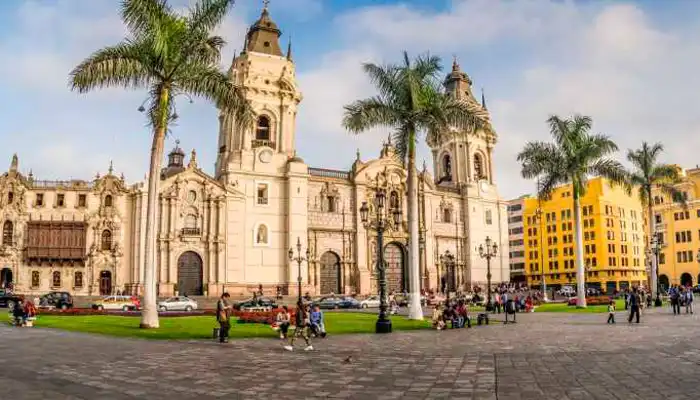
The urban roots of Lima lie in the area known as the “Damero de Pizarro,” the foundational zone of the city. Declared a UNESCO World Heritage Site, the Historic Centre is home to impressive colonial and republican buildings, such as the Cathedral, the San Francisco Monastery, and the Government Palace, located on the edges of the Plaza de Armas (Main Square).
If you want to explore the centre of power and gain a clearer understanding of Peru’s viceroyal and republican history, you must visit this part of the capital metropolis.
Miraflores and Barranco
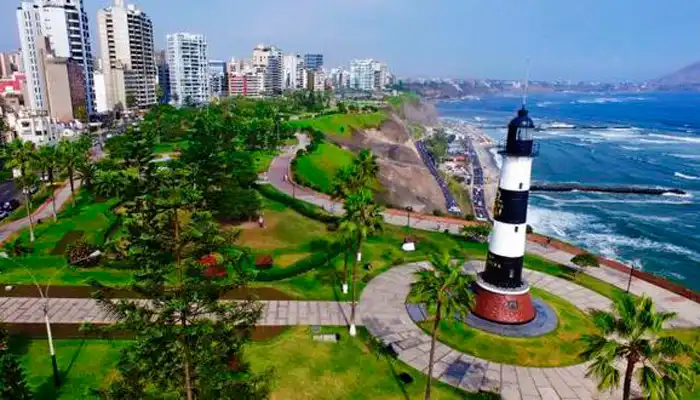
If you’re looking to get close to the sea in Lima, want to enjoy a fun night out, wish to taste the delicious Peruvian cuisine and new gastronomic trends, or need to shop or stay in a quiet area, these districts will delight you.
Historical, commercial, bohemian, and with views of the sea along the Costa Verde, Miraflores and Barranco are excellent tourist options in the bustling capital metropolis.
Hotels, shopping centres, financial institutions, and fantastic restaurants blend seamlessly with monumental spaces such as the Park of Love, the Bridge of Sighs, and the resilient colonial and republican houses that still stand.
Larco Museum
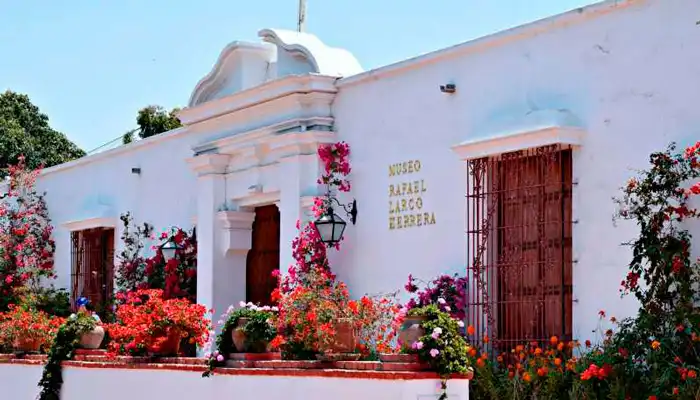
A must-visit if you’re fascinated by archaeology and want to explore ancient Peru. The rooms of the Larco Museum, located in a mansion in the district of Pueblo Libre, showcase one of the largest collections of pre-Columbian art. Jewels, ceramics, textiles, and the famous erotic huacos from the Moche, among other historically significant pieces, will illustrate the development and consolidation of the Andean and coastal civilisations.
Huaca Pucllana
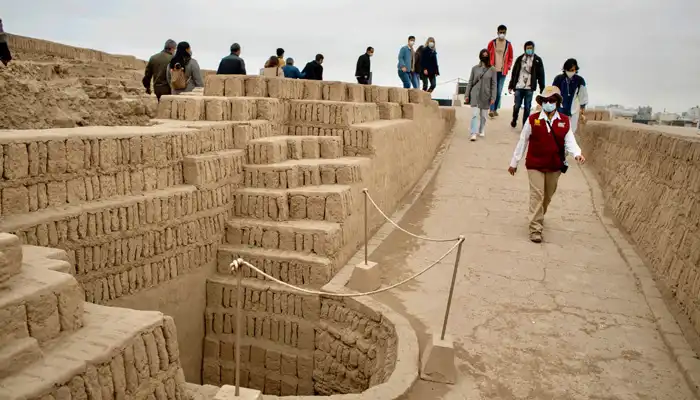
This pyramid from the Lima culture (200–700 AD) is yet another reason to visit Miraflores. Located on the tranquil General Borgoño Street, the Huaca Pucllana will reveal that organised societies existed in the current capital territory long before the arrival of the Spanish. Explore it by day or by night, and if you feel like treating yourself, grab a table at the restaurant situated within the archaeological site.
Lima’s Gastronomy
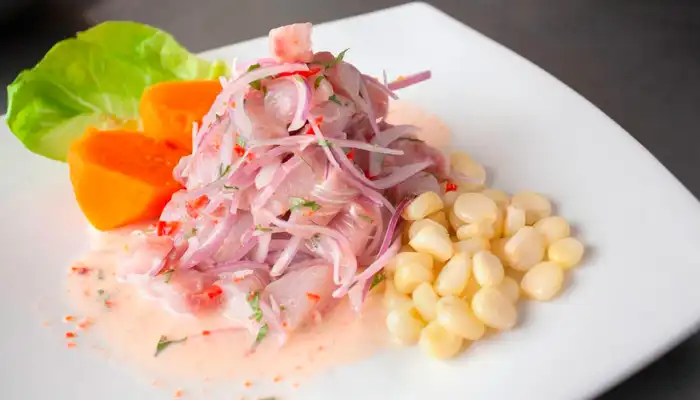
Lima is synonymous with excellent gastronomy, thanks to the diversity, exquisite flavours, and versatility of its culinary offerings. In the Peruvian capital, you can enjoy great food, whether at an internationally renowned restaurant or at a modest market stall. So get ready to savour the best ceviches, lomo saltado, anticuchos, and other national delights.
If you want to “venture” into fusion flavours, don’t worry. The city will offer you a varied menu with bold proposals that will leave you more than satisfied. Your table is set: enjoy your meal!
Cusco: the Inca Capital
In Cusco, you’ll feel that the Andean and Inca civilisations have resisted the cultural impositions of their invaders in many ways. These roots, combined with the urban influences of colonial Spanish culture, give the city a unique identity that you’ll come to know and understand as you walk through its Historic Centre.
Founded by the legendary Manco Capac and Mama Ocllo, Cusco became the capital of the Tawantinsuyo during the reign of the ninth Inca, Pachacutec.
Located at an altitude of approximately 3,400 m a.s.l., its narrow cobbled streets, Inca and colonial buildings, traditions, and popular festivals make it a dream destination for travellers from all over the world.
Plaza de Armas and Cathedral
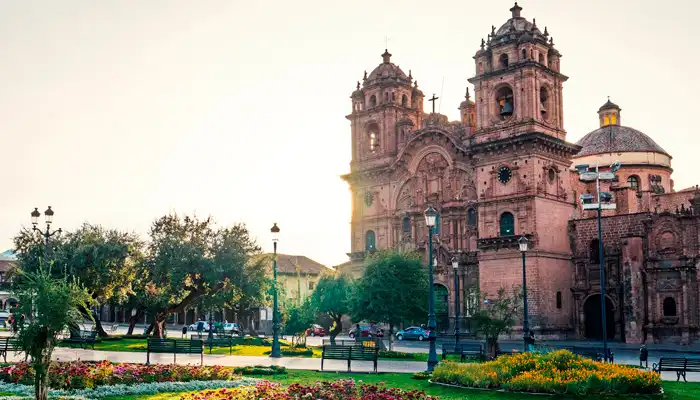
At the heart of the city, the Plaza de Armas (Main Square) is a vibrant space surrounded by colonial buildings, adorned with a central fountain topped by the image of an Inca. The impressive Cathedral stands out in this monumental setting, a religious structure built upon the walls of a pre-Hispanic palace. Inside, you will admire masterpieces of viceroyal religious art.
Archaeological Park of Sacsayhuamán
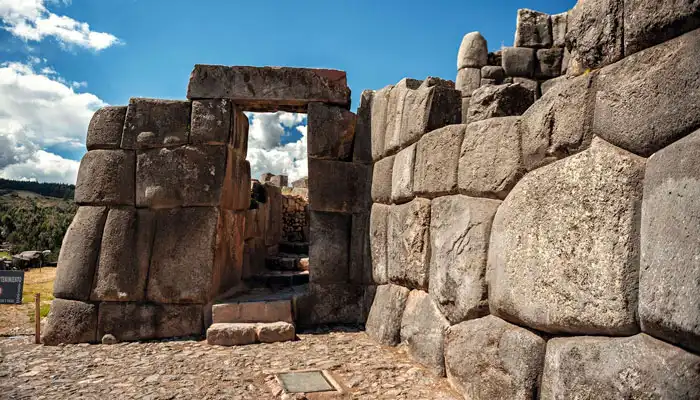
You won’t have to venture far from the Historic Centre to explore one of the most important archaeological sites of Inca Cusco. Sacsayhuamán was a ceremonial centre with defensive and military functions, known for its enormous carved stone blocks and its strategic location that offers stunning views of the city.
Sacred Valley of the Incas
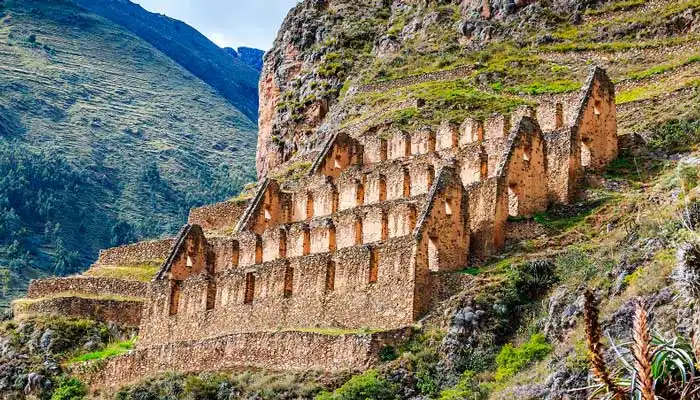
On the outskirts of Cusco lies a fertile valley that served as the granary for the capital of the Tawantinsuyo. Flanked by mountains and traversed by a powerful river, the Sacred Valley is home to archaeological sites and farming villages where you can share in the daily activities of the descendants of the “children of the Sun.”
Pisac, Ollantaytambo, and Chinchero are some of the must-visit stops in the Sacred Valley. And if you’re an adventurous traveller, don’t hesitate to go rafting on the Urubamba River, trek along dusty trails, or ride a fun quad bike; there’s always plenty to do in Cusco!
Machu Picchu
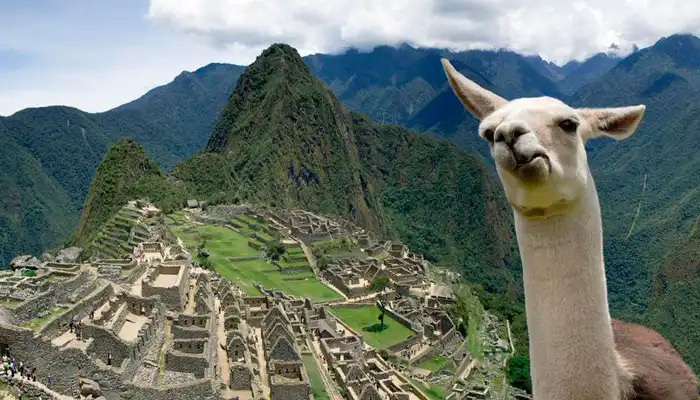
So much has been written about this stone wonder built between the Andes and the Amazon that all we want to say is: visit it as many times as you can, because Machu Picchu always evokes different feelings. That’s part of the magic and charm of the so-called “Lost City of the Incas,” the crowning achievement of the “children of the Sun,” which Hiram Bingham brought to global attention in 1911.
Since then, millions of people from all five continents have walked its steps and streets, explored its temples, palaces, and agricultural terraces, climbed Huayna Picchu, and admired the breathtaking greenery that surrounds this historical sanctuary in the Urubamba province of Cusco.
Cusco Gastronomy
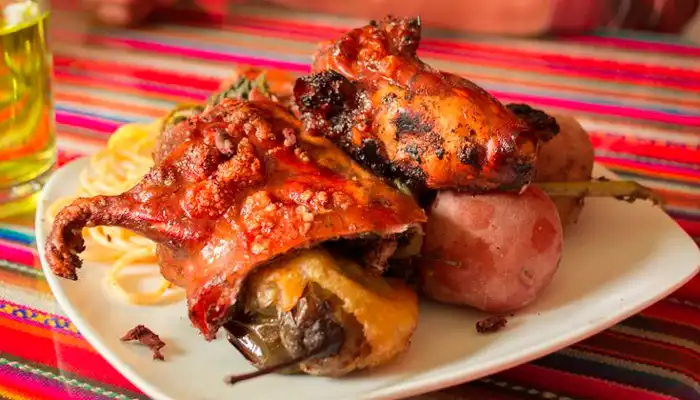
Regardless of your chosen destination, exploring the local cuisine is an unmatched experience. This is true throughout Peru, and Cusco is no exception.
The regional cuisine is “nourished” by the finest Andean ingredients, honouring the tables with memorable dishes such as quinoa soup, chiriuchu, roasted guinea pig, and chicharrones, often served with potatoes—the tuber domesticated in the Andes thousands of years ago—and the ever-present ajicito.
When it’s time to toast, order a craft beer or a good glass of chicha de jora or frutillada. Keep in mind that chicha is a traditional drink made from maize, widely consumed by the people of Cusco. Trying it is almost a travel must.
Arequipa: the City of Volcanoes
Founded on 15th August 1540 by Garci Manuel de Carbajal, Arequipa (2,333 m above sea level) is known as the “White City” due to the colour of the sillar. This volcanic stone is used in the grand houses, churches, and colonial convents of its Historic Centre, which has been declared a UNESCO World Heritage Site.
Monumental, unique, and picturesque, the city is “guarded” by three volcanoes: Misti—the tutelary mountain—Chachani, and Pichu Pichu. This majestic trio of mountains imposes its beauty on the horizon, creating a panorama that you will find hard to forget.
Monastery of Santa Catalina
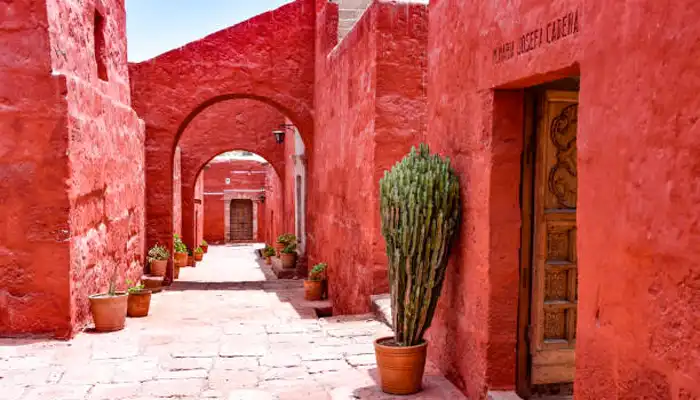
This city of faith was inaugurated in the 16th century to welcome women who, whether by personal choice or family obligation, withdrew from everyday temptations to dedicate their lives to prayer and the worship of God as cloistered nuns.
Santa Catalina is an exquisite example of viceroyal architecture in the Historic Centre of Arequipa. You’ll realise this as you stroll through its serene streets and silent spaces that once housed the religious devotion or suffering of hundreds of women.
Plaza de Armas and Cathedral
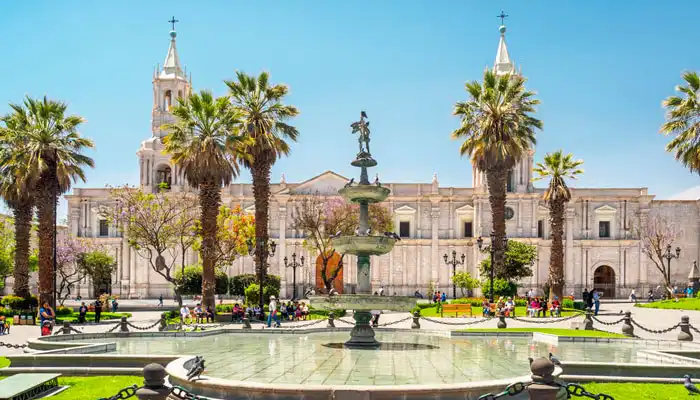
It is the main urban space since the Spanish founding of Arequipa. Take your time to explore it and observe the arcades, churches, and colonial buildings that complement this architectural ensemble. Sit on one of the benches and enjoy the water play from its fountain, crowned by an iconic figure known as the Tuturutu.
Make sure to visit the Basilica Cathedral, which houses valuable works of religious art in its cloisters. Also, pay close attention to the facade of the Church of the Society of Jesus, a splendid example of Andean Baroque architecture.
Yanahuara Viewpoint
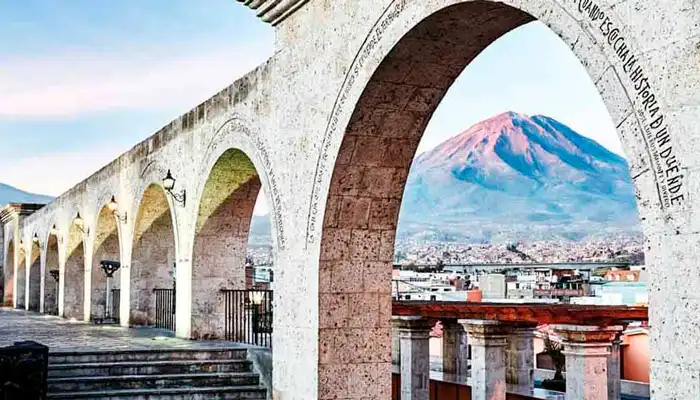
If you want a panoramic view of the city and its volcanoes, head to this viewpoint in the traditional nearby district of Yanahuara. In this contemplative space, you’ll find several sillar arches adorned with phrases and verses that reflect the pride of being from Arequipa.
Your visit won’t be complete without treating your palate at one of the picanterías in Yanahuara, true bastions of local gastronomy, which is among the best in the country.
Colca Canyon
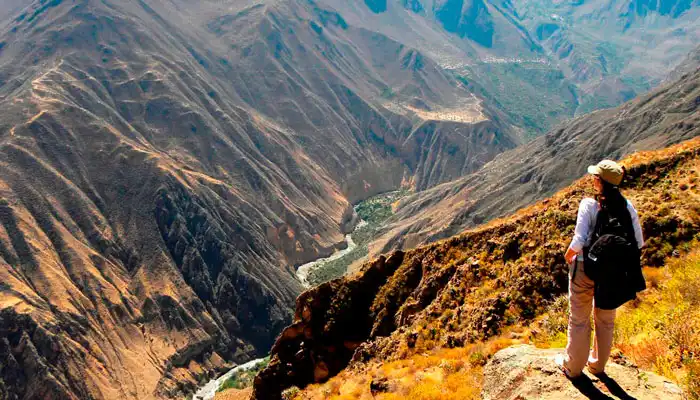
Three hours from Arequipa lies one of the deepest canyons in the world. Carved by the powerful waters of the Colca River, this exceptional destination in the province of Caylloma offers volcanoes, hot springs, archaeological sites, farming villages, and colonial churches with stunning architecture.
But the main attraction is the flight of the condor, the majestic scavenger bird that inhabits the heights of the canyon. When you see it soaring between the canyon walls, you’ll understand the reverence and respect that ancient people had for one of the representative animals of the Andean fauna.
Arequipeña Gastronomy
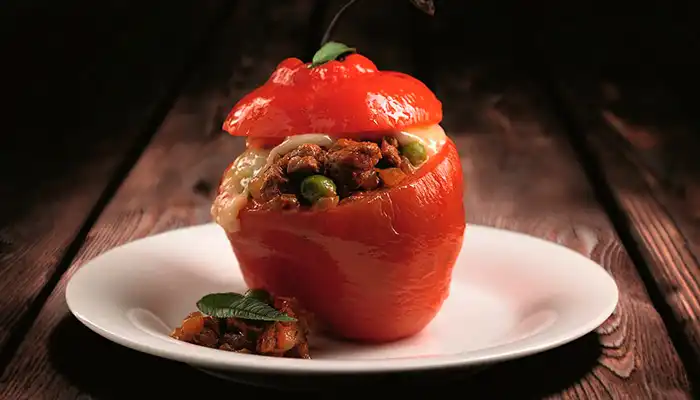
Arequipeña gastronomy is famous for its diverse flavours and creative use of local ingredients. Some emblematic dishes include rocoto relleno, adobo arequipeño, chupe de camarones, and solterito. Additionally, Arequipa is renowned for its famous dessert, queso helado.
Puno: on the shores of Lake Titicaca
The city of the lake and the Virgin of Candelaria. The highland city at an altitude of 3,827 metres above sea level. The city known as the “Folkloric Capital of Peru” for its groups of devils and sikuris, morenos and caporales, among other Quechua, Aymara, and mestizo dances that are performed in both the city and the countryside.
Located in the southeast of the country, Puno awaits you to navigate the mythical waters of Titicaca—the highest navigable lake in the world—to explore the Uros, Taquile, and Amantaní islands, and to dance in February in honour of Mamita Candelaria, the city’s patroness.
Festival of the Virgin of Candelaria
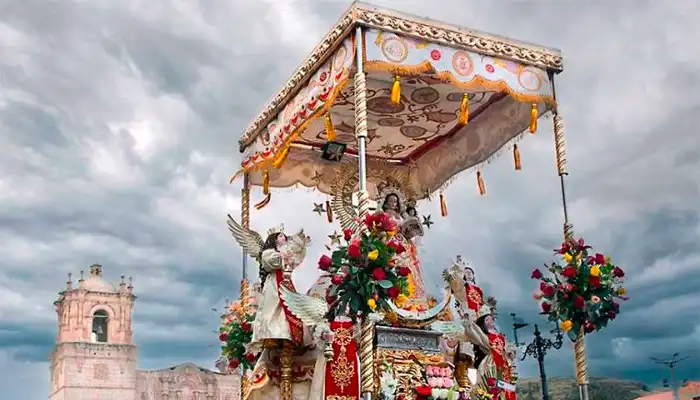
It’s a religious celebration, but it feels like a carnival. In February, thousands of fervent dancers from all over the region take to the streets to honour the Virgin of Candelaria, the mamacha or mamita who, according to legend, prevented Puno from falling into the hands of a group of rebellious Indigenous people during the viceroyalty.
Declared a UNESCO Intangible Cultural Heritage, the Festival of Candelaria blends Catholic religious customs with Andean rituals. The result is a celebration that will dazzle you with the faith and enthusiasm of devotees who dress as archangels and devils to give thanks for the miracles of the mamita of Puno.
Lake Titicaca
It is the main attraction of Puno and the Peruvian highlands. Shared with Bolivia, Titicaca is much more than just a lake. The origin of the Inca Empire is linked to this vast body of water, which covers approximately 8,300 km². Legend has it that Manco Capac and Mama Ocllo, the “children of the Sun,” emerged from its waters to found Cusco.
When you’re in Puno, stroll along the Ecotourism Boardwalk that lines the bay and visit the lakeside port, where boats depart for the Uros, Taquile, and Amantaní islands. Don’t miss the opportunity to sail on Lake Titicaca; it will be an experience you’ll cherish forever.
Floating Islands of the Uros
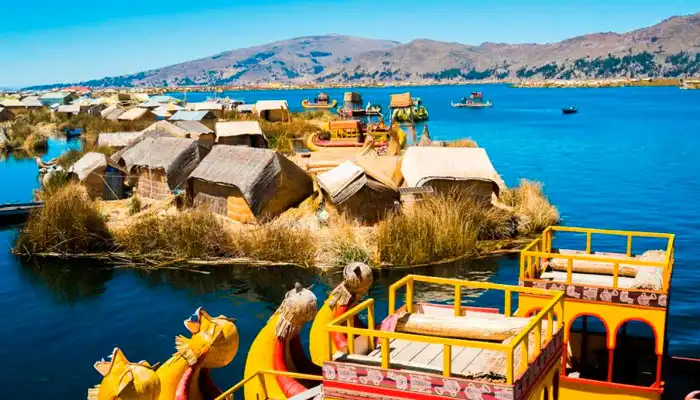
If your travel schedule is tight but you want to sail on Lake Titicaca and meet the descendants of an ancient highland culture, set off for the floating islands of the Uros. Keep in mind that when you disembark, you won’t be stepping onto solid ground but onto totora, an aquatic plant native to South America. These islands aren’t natural; they are artificial and woven from this herbaceous plant. That’s not all—rafts and various handicrafts are also made from it. This tradition, inherited from their ancestors, is still proudly upheld by the Uros people today.
Islands of Taquile and Amantaní
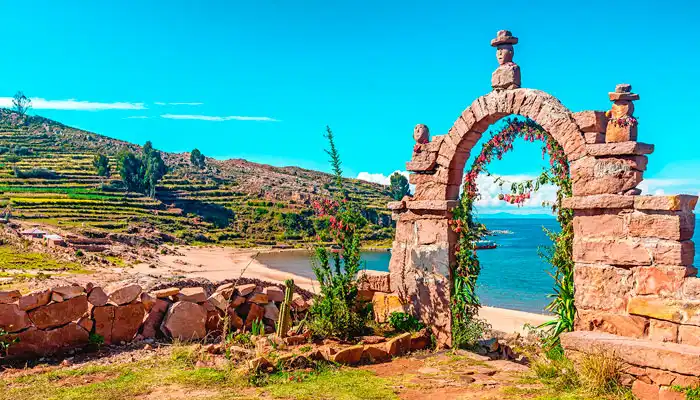
The experience on these islands goes beyond simply enjoying the natural beauty and lakeside scenery. In Taquile and Amantaní, you’ll share daily life with the local inhabitants. It’s immersive tourism at thousands of metres above sea level, allowing you to learn about community customs and the everyday activities of your hosts, men and women who work the land and are expert weavers.
Trujillo: City of Eternal Spring
Spring and marinera, the national dance of Peru, are two words that define Trujillo, the capital of the La Libertad region on the northern coast of Peru. Founded on 5th March 1535, the city is distinguished by its viceroyal charm, its pre-Hispanic archaeological legacy, and its beautiful beaches.
Known as the “City of Eternal Spring” for its warm climate, Trujillo loves marinera, delights in the elegant trotting of Peruvian paso horses, and celebrates the arrival of the flower season with a vibrant international festival.
City of Chan Chan
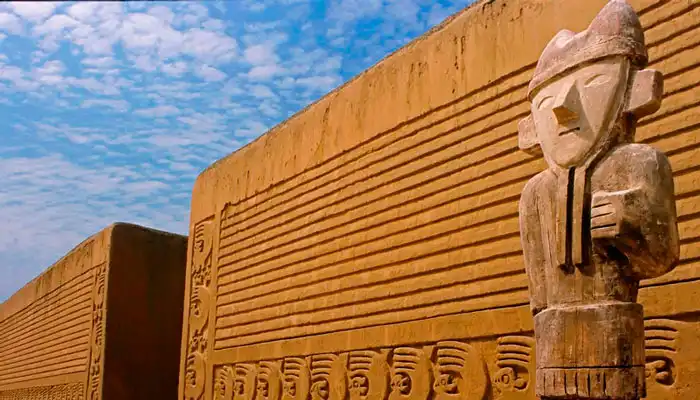
On the outskirts of Trujillo’s Historic Centre lies Chan Chan, the largest adobe city in Latin America, declared a UNESCO World Heritage Site. It was built by the Chimú, a pre-Hispanic culture and kingdom that developed in the Moche Valley between the 12th and 15th centuries AD.
The City of the Radiant Sun (that’s what its name means in Spanish) was the political and religious capital of the Chimú. At its peak, the ten independent “citadels” or “palaces” in this archaeological zone housed up to 100,000 people.
Temples of the Sun and the Moon
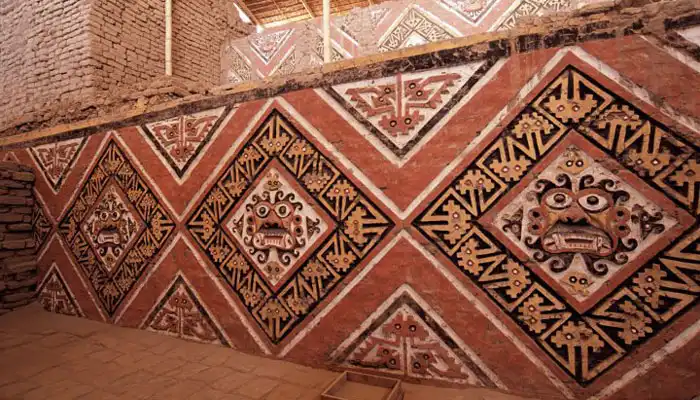
The Moches or Mochicas, a pre-Hispanic civilisation that flourished between the 2nd and 7th centuries AD, bequeathed to humanity the Temples of the Sun and the Moon. These archaeological sites in the Moche Valley (on the outskirts of Trujillo) were constructed with adobe. Inside, you’ll find striking murals, paintings, and high reliefs of their deities.
Among the representations, the fierce image of Ai Apaec stands out, the creator god and protector of the Moche world. This mythical being, known for decapitating and slaying his enemies, had large fangs and wore a serpent belt and ear ornaments. It is believed that human sacrifices were performed at these huacas.
Huanchaco
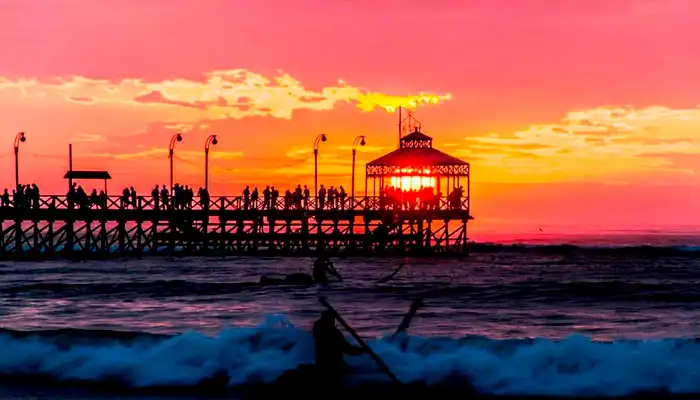
Just 14 kilometres from the monumental area of Trujillo, you’ll find a beach with irresistible waters and waves. Swimming and surfing are activities waiting for you in Huanchaco. But that’s not all. Taking to the sea on a totora boat and tasting the local seafood will round off your adventurous day on this stretch of the Pacific coast.
Trujillo Gastronomy
Ignoring northern cuisine would be a serious travel oversight. Trujillo’s gastronomy is like springtime, as each of its dishes will brighten your spirits and fill you with enthusiasm for their exquisite flavours. Culinary highlights include shambar (a hearty soup served on Mondays), sopa teóloga, seco de cabrito with beans, frito trujillano, and of course, a good ceviche. The menu is varied—it’s up to you to choose!
Travel Recommendations
- During your visit to archaeological sites and natural areas, strictly follow the rules and regulations in place to protect cultural and ecological heritage.
- Do not leave trash or remove plants or animals. Be respectful of the environment.
- Buy local products, eat at family-run restaurants, and participate in cultural activities that promote experience sharing and sustainable development.
- Choose local tour operators that follow sustainable practices and respect the environment and the local communities.
- Look for eco-friendly accommodations and use public transport whenever possible. This will help reduce your carbon footprint.






